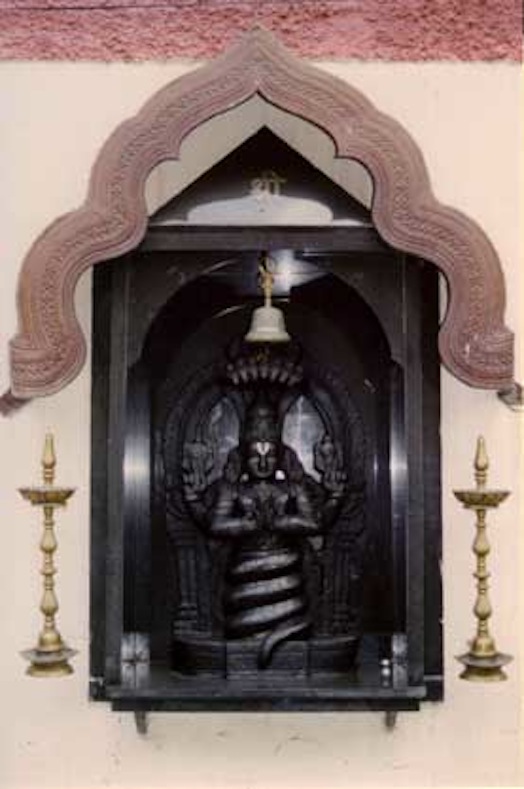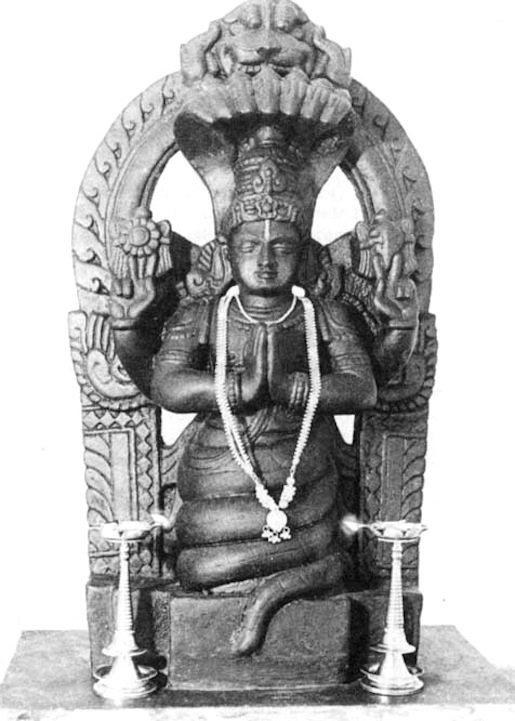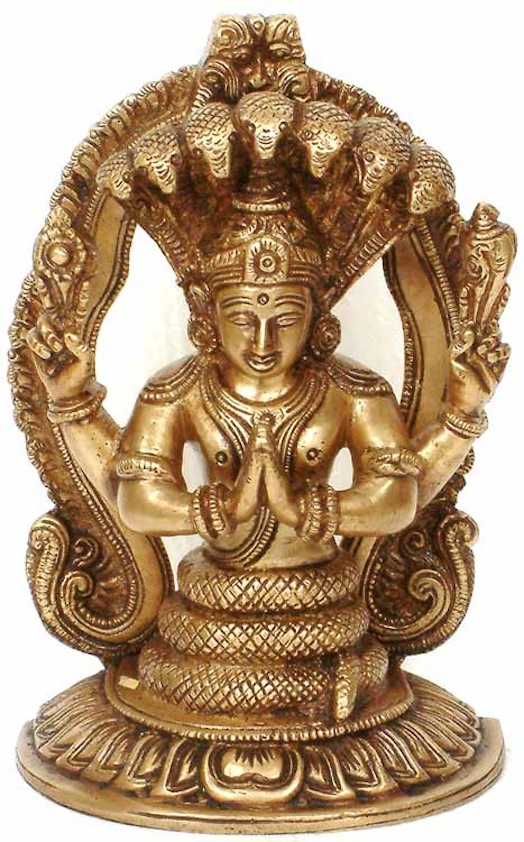Who Was Patanjali?
Almost everything about Patanjali’s life and work is unknown. He may have lived in 400 B.C., or he may have lived in 600 A.D. Or anywhere in that 800-year span. But it seems more likely that he lived somewhere between 200 and 400 years B.C.Whenever he lived, Patanjali has the best birth legend ever. One day Shiva came along and did a dance in front of Vishnu, who was sitting on a snake. Shiva’s dance so delighted Vishnu that his body started to vibrate with excitement.
The snake, whose name was Adisesa, then said that he wanted to learn to dance like that so he could delight Vishnu, who blessed him and said, Okay, someday you can be born as a human and dance. Adisesa then was thinking and thinking about who his mother could be, and he became aware of a Yogini on Earth, a very experienced yoga teacher by the name of Gonika, who was wanting to have a son. She was on her knees, praying to Surya, the sun god, for a child. Adisesa appeared in her hands as a tiny serpent, then changed form into a human baby. Baby Patanjali!
Some scholars derive his name as pata - meaning both serpent and fallen, + anjali, refering to the gestures his mother’s hands made when joined in prayer.
The following is adapted from the daring and wonderful writing of Kofi Busia, who has been teaching Iyengar Yoga for 35 years.

Photo: Michael Noche. Statue of Patanjali at Ramamani Iyengar Memorial Yoga Institute, Pune, Maharashtra, India.
“According to another legend, shortly before Patañjali was born the Lord Vishnu was seated on his serpent, Adisesa. (Adisesa is in fact one of the many incarnations of Vishnu). While seated on his serpent carriage Vishnu was enraptured by the dancing of Lord Siva. Vishnu was so affected that his body began to vibrate causing him to pound down heavily on Adisesa -- who consequently suffered great discomfort. When the dance ended the weight was instantaneously lifted. Adisesa asked Vishnu what had happened. On hearing about the dance Adisesa wanted to learn it so he could personally dance it for the pleasure of Vishnu, his lord. Vishnu was impressed and predicted to Adisesa that one day Lord Siva would bless him for his understanding and devotion and that he would be incarnated so that he could both shower humanity with blessings and fulfill his own desire to master dance. Adisesa immediately began to ponder on the question of who his mother would be. At the same time a virtuous woman named Gonika, who was totally devoted to yoga, was praying and seeking for someone to be a worthy son to her. She wanted to pass on the knowledge and understanding she had gained through yoga. Concerned that, with her days on earth now severely numbered, she had not yet found a candidate, she prostrated herself before the Sun, the earthly manifestation of the light and presence of God. She scooped up the only gift she could find -- a handful of water -- and beseeched him to bestow her with a son. She then meditated upon the Sun and prepared herself to present her simple but sincere offering. On seeing all this Adisesa -- the bearer of Vishnu -- knew that he had found the mother he was looking for. Just as Gonika was about to offer her handful of water to the Sun, she glanced down at her hands and was astonished to see a tiny serpent moving in her hands. She was even more astonished when, within a few moments, that serpent had assumed a human form. Adisesa, who it was, in his turn prostrated before Gonika and pleaded with her to accept him as her son.” Link
Other images of Patanjali

Traditional representation of Patanjali with the hood of a cobra, and lower body as the tail of the snake.

Brass statue of Patanjali from Exotic Indian Art.
Patanjali is often shown wrapped up in a many-headed snake, symbolic of the thousand-headed serpent. He has four arms, two hands joined in a mudra, and two hands holding different boons or symbols of power such as a sword, mace, conch shell, and disk.
Also see Yoga Samiti of Pune